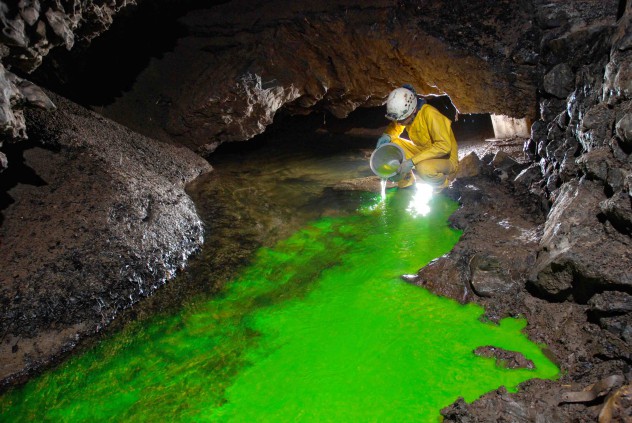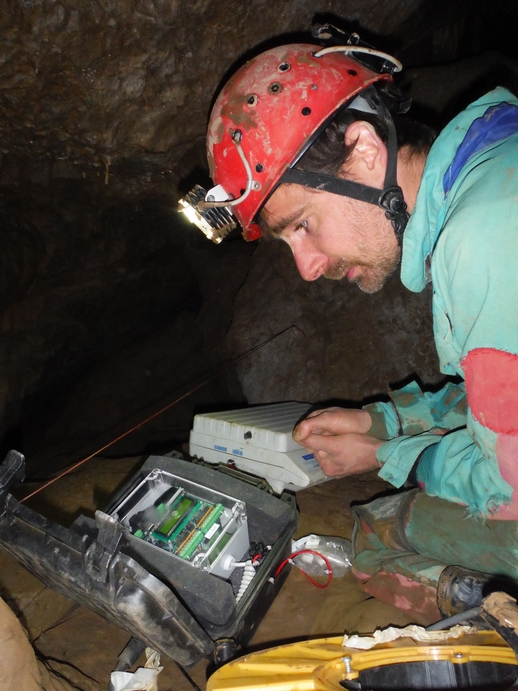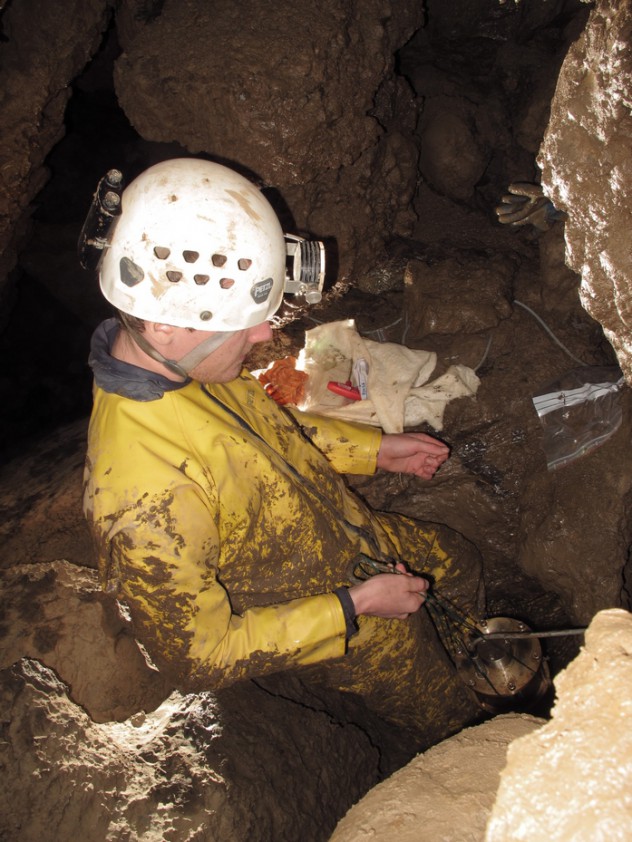Tracer tests experiments are one of the most used technique in karst hydrogeology in order to understand the functioning of active underground streams. This methodology allows accessing several information about groundwater, most of the time in caves that are inaccessible with conventional means. Tracer tests answer to different questions such as :
- What are the existing hydrogeological connections in the karst network?
- What are the transfert velocities of groundwater flows?
- What are the main features of the flow media?
- Are the flow connections depending on the hydrological conditions?


A tracer test consists of an injection of a tracing substance at one point of the karst system (sinkhole, underground river…) and recording the restitution of this tracer at another downstream point (exurgence, another underground river…). For the measurement, an automatic field fluorometer is used (Schnegg, 2002). This portable device allows the detection and the quantification of florescent dye tracers. Using multiple field fluorometers during the same test is useful to covers the maximum of the restitution sites.

For the KARAG project, five field fluorometers are used during each tracer test, measuring the tracer concentration in water with a timestep of 5 to 15 minutes. In addition, data from a permanent fluorometerer installed in the Eprave resurgence are also available (monitoring : P. Meus and ISSeP).
The repetition of tracer tests for variable conditions (hydrologic, injections and measurement sites) allows to understand the hydrogeological organization of the karst system and the water transport features. This is a key step in order to study the karst aquifer dynamic in this area.
